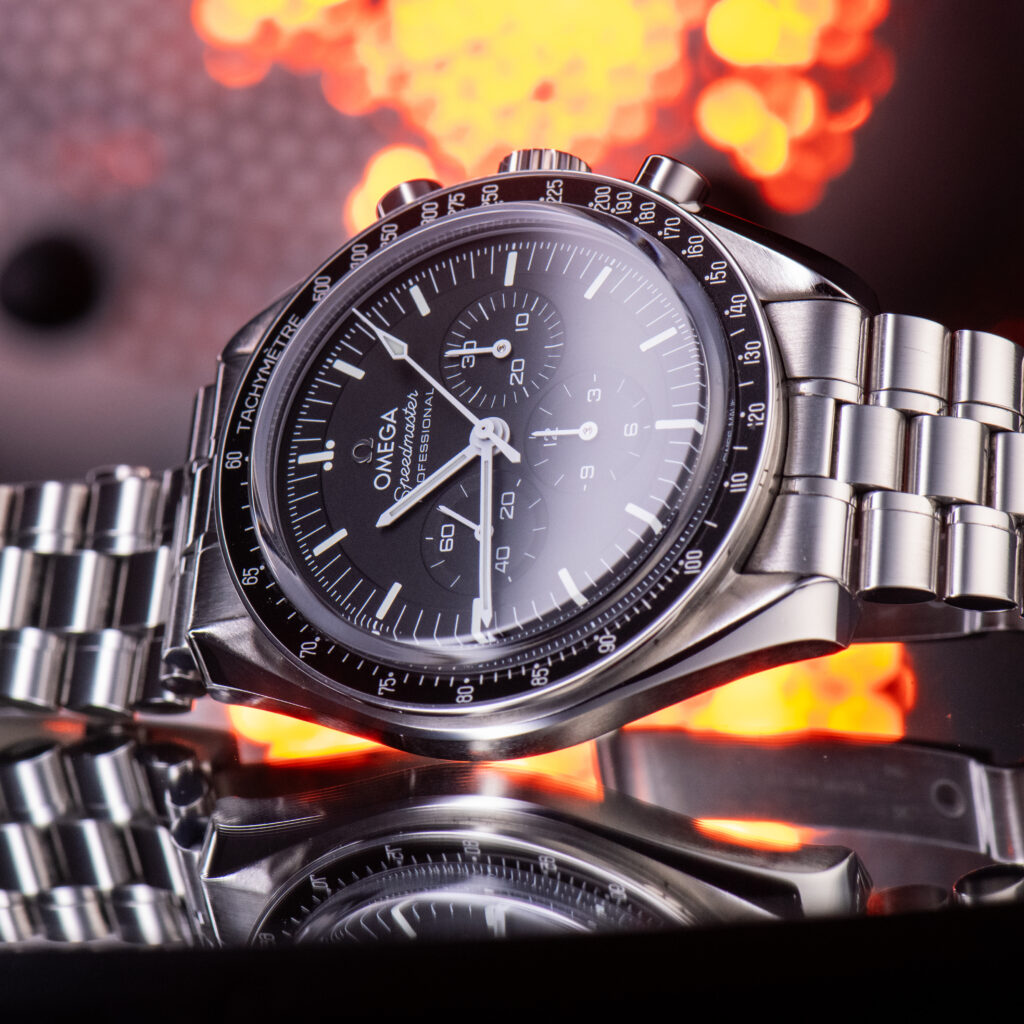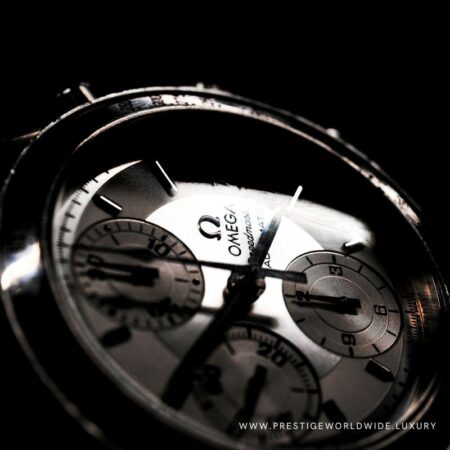
A Phone Rang In Houston
In the spring of 1964, engineers in Building 32 at the Manned Spacecraft Center faced a mundane but mission-critical gap in Apollo hardware: if onboard timers failed, astronauts needed a wrist-worn chronograph that could survive everything a Saturn V, a lunar EVA, and a Pacific splash-down might throw at it. Four manufacturers were invited to provide off-the-shelf pieces. Only one would leave the room intact.
The Eleven Trials
Forget today’s COSC certificates or 10-bar splash resistance decals. NASA’s procurement spec read like an aerospace horror novella:
| Test | Conditions | Why It Matters |
|---|---|---|
| Thermal Bake | 160 °F for 48 h, followed by 200 °F at 0.35 atm | Simulates a Mercury capsule baking on a Florida launch pad |
| Deep-Freeze | −18 °C for 4 h | Dark-side orbital exposure |
| Vacuum Cycling | 15 swings between +71 °C and −18 °C at 10⁻⁶ atm | Thermal shock on EVA |
| 95 % Humidity | 240 h, 20-71 °C | Flooded hatch scenarios |
| Pure Oxygen | 48 h at 71 °C, 0.35 atm | Apollo cabin atmosphere, pre-fire safety revision |
| High Pressure | 1.6 atm for 60 min | Re-entry cabin repressurization |
| Rapid Decompression | 10⁻⁶ atm while at 93 °C | Hatch blow-off contingency |
| Linear Acceleration | 1→7.25 g in 333 s | Saturn V ascent loads |
| Shock | Six 40 g, 11 ms blows | Booster staging |
| Random Vibration | 7.8 g RMS | Launch pad acoustics |
| EMI / Acoustic | MIL-STD-461A | Suit radio interference |
One stoppage, one fogged crystal, or drift beyond ±6 sec/day and the watch was out.
Carnage On The Benches
Rolex’s ref. 6238 lost its bezel after the fourth thermal cycle; Longines-Wittnauer’s crystal popped under vacuum; Hamilton’s electromechanical prototype never cleared the vibration fixture. Only Omega’s Speedmaster ST 105.003—then just a sporty, $82 hardware-store chronograph—ticked through every insult. On March 1, 1965 NASA stamped a memo that would define modern watch mythology: “Flight-Qualified for All Manned Space Missions and EVA.”
The Bulova Re-Match No One Mentions
Seven years later, a Senate “Buy American” initiative pushed NASA to retest. Bulova’s prototype chronographs entered a leaner but harsher regime—higher random vibration, longer humidity dwell. They stalled four times; the Speedmaster did not. The Houston flight surgeons quietly closed the file, and Omega rode shotgun on Apollo 17, Skylab, and the first Shuttle flights.
Why The Protocol Still Echoes In 2025
Redundancy Over Precision – ±6 sec/day sounds laughable beside a Grand Seiko Spring Drive, but the mandate was survivability, not observatory-grade rate.
Real-World Samples – NASA bought retail watches, factory oils, and all. No “ringers.”
Failure-Mode Transparency – every broken balance staff, every bubbled crystal was cataloged and circulated among contractors—space doesn’t tolerate “acceptable losses.”
Yet gaps remain. Radiation hardness, lithium-ion venting, and magnetic-field spikes from ISS solar arrays were never part of the ’65 script. Modern digital crew watches (Omega X-33 Marstimer, Fortis AMADEE) face supplemental tests under ITAR-restricted protocols.
Reading The Scars
Early-Ed White 105.003s that mirror the test piece command premiums because they’re the last “straight-lugs” to wear NASA laurels. Later 145.012 “as-flown” Moonwatches, meanwhile, embody the matured spec—with asymmetrical case flanks shielding pushers against those 40 g shocks. The lesson? Form followed failure reports.
The Space-Watch Arms Race Returns
Private missions are rewriting the playbook. IWC supplies chronographs to Polaris Dawn; Fortis tests Mars-grade prototypes in stratospheric balloons; Micromilspec builds mission-patch dials for Space Force. Yet every brand name-drops NASA’s 1965 gauntlet because no other certificate resonates as loudly in a product description.
A Skeptic’s Verdict
Marketing copy often recycles “Moonwatch” lore without reading the declassified test sheets. We did—and the numbers are nastier than legend. The Speedmaster didn’t win because it was Swiss, glamorous, or pre-ordained; it won because it didn’t die when everything around it tried to kill it. Any modern “space-ready” claim that can’t produce an equally brutal lab log is, frankly, just aspirational jewelry.
Until another watch survives an eleven-round beating at the edge of physics—and brings its timestamped telemetry as proof—the winner from Building 32 keeps the belt.

